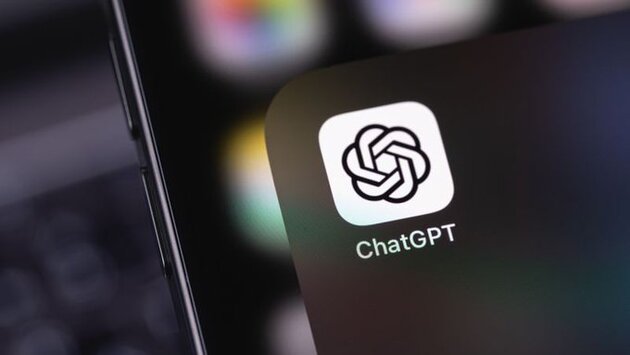
Despite its impressive capabilities, ChatGPT isn’t perfect—and many users are starting to ask: what are the things ChatGPT can’t do yet? From fact-checking flaws to ethical transparency, this AI still has room to grow. In this blog, we break down five key limitations of ChatGPT, how they impact users, and what improvements we hope to see in future versions. Whether you’re a casual user or rely on AI for work, understanding these gaps will help you get the most from your chatbot experience.
In 2025, AI is more embedded in our lives than ever before. ChatGPT can summarize lengthy documents, craft personalized emails, solve tricky math problems, and even act like a creative writing coach. But for all its brilliance, ChatGPT lacks some surprisingly essential abilities—things that would make it more honest, energy-efficient, and human-aware. Let’s explore the most requested upgrades and why they matter.
One of the most frustrating limitations of ChatGPT is its tendency to "hallucinate"—that is, to confidently deliver incorrect or fictional information. Because the AI is built to predict the next most likely word in a sentence, it often prioritizes fluency over factuality. Instead of saying, “I’m not sure” or “I don’t have information on that,” it forges ahead with bold (but wrong) answers.
This becomes problematic in high-stakes environments like healthcare, law, or financial advice. Users could take ChatGPT’s output at face value, not realizing it lacks certainty or even real understanding. A simple solution? A transparency mode where the AI clearly marks uncertain responses with phrases like “This is a best guess” or “This may not be accurate.” This feature alone would go a long way in building trust between humans and AI.
While AI may feel like magic, it runs on powerful hardware that consumes massive amounts of electricity. Training large language models and responding to millions of prompts per day requires immense energy—often sourced from fossil fuels. Yet, most users have no idea how much energy their ChatGPT session uses, or how it compares to, say, streaming a video or sending an email.
In 2025, digital sustainability matters more than ever. We want tools that are not only smart but also conscious of their environmental impact. Imagine if every prompt came with an “eco score” or energy disclosure, showing users how their usage affects the planet. This kind of visibility could promote more mindful AI usage—and perhaps even encourage providers to invest in greener infrastructure.
Despite advances like ChatGPT’s “web browsing” or plugin features, the AI still struggles to handle real-time data seamlessly. Stock prices, live sports results, breaking news, or up-to-the-minute events are often out of reach. Even when browsing is enabled, results can lag or be outdated—especially for events happening within the past few minutes.
For users who rely on ChatGPT for current trends, social commentary, or data-driven decisions, this is a major drawback. Ideally, future versions would integrate with verified real-time data feeds, offer timestamped information, and allow users to validate sources within the chat. Until then, ChatGPT remains more like a wise archive than a truly live assistant.
ChatGPT’s ability to remember context within a session is powerful, but it’s still limited in its ability to recall information over time unless specifically configured (like with custom instructions or memory settings). For everyday users, this means the AI forgets your preferences, writing style, and ongoing projects unless you reintroduce them in every session.
This short-term memory bottleneck leads to repetitive conversations, limits personalization, and reduces ChatGPT’s usefulness as a daily assistant. Imagine a future where the AI remembers your weekly goals, ongoing work files, tone preferences, or even personal milestones—safely and with your full control. It would bridge the gap between digital tool and real companion.
While ChatGPT is great at mimicking tone and style, it doesn’t genuinely “feel” emotions. It lacks emotional intelligence in the human sense—it can generate empathetic responses, but it doesn’t understand empathy. This becomes clear in sensitive scenarios like grief, conflict resolution, or mental health support, where a misstep in tone can make a big difference.
We don’t expect ChatGPT to replace therapists or friends. But there’s growing interest in making AI emotionally safer—detecting distress signals, choosing appropriate words, or simply knowing when to redirect users to real human help. A deeper layer of emotional context detection would help AI act more responsibly, especially in emotionally charged conversations.
So what’s the takeaway? ChatGPT is powerful, versatile, and evolving fast—but it’s still missing key features that would make it truly transformative. By adding transparency about uncertainty, disclosing its environmental impact, integrating reliable real-time data, expanding memory, and deepening emotional intelligence, ChatGPT can move from a novelty tool to a truly trusted partner.
As AI tools become part of our daily routines, we need them to be more than just clever—they need to be responsible. And that means acknowledging what they can’t do (yet) as much as celebrating what they can. Until then, keep your expectations smart and your fact-checking sharper.


𝗦𝗲𝗺𝗮𝘀𝗼𝗰𝗶𝗮𝗹 𝗶𝘀 𝘄𝗵𝗲𝗿𝗲 𝗽𝗲𝗼𝗽𝗹𝗲 𝗰𝗼𝗻𝗻𝗲𝗰𝘁, 𝗴𝗿𝗼𝘄, 𝗮𝗻𝗱 𝗳𝗶𝗻𝗱 𝗼𝗽𝗽𝗼𝗿𝘁𝘂𝗻𝗶𝘁𝗶𝗲𝘀.
From jobs and gigs to communities, events, and real conversations — we bring people and ideas together in one simple, meaningful space.

Comments